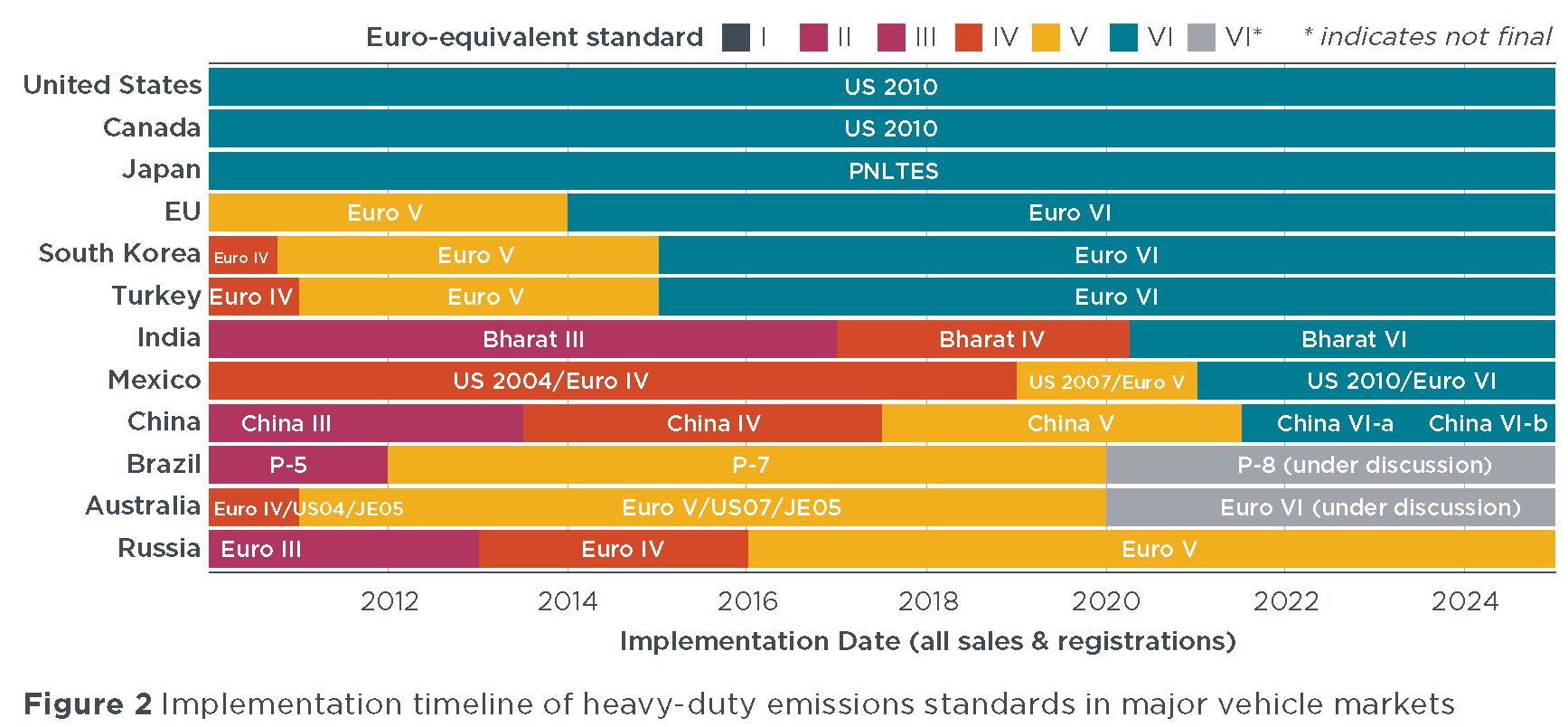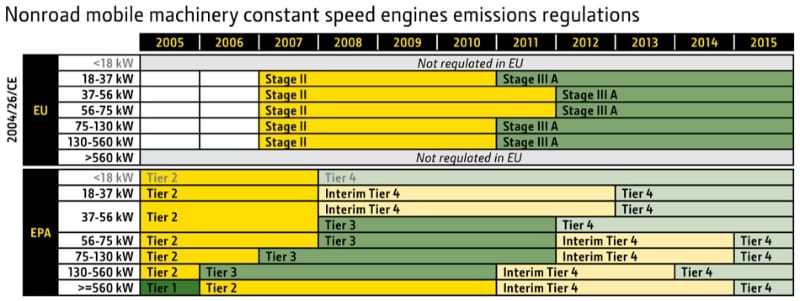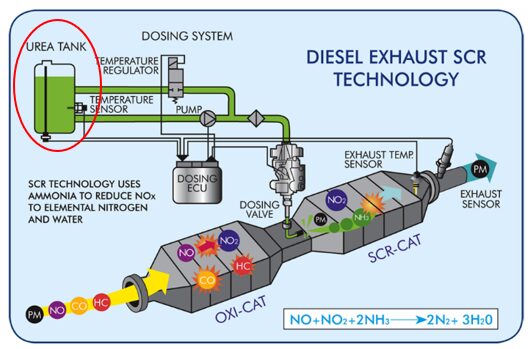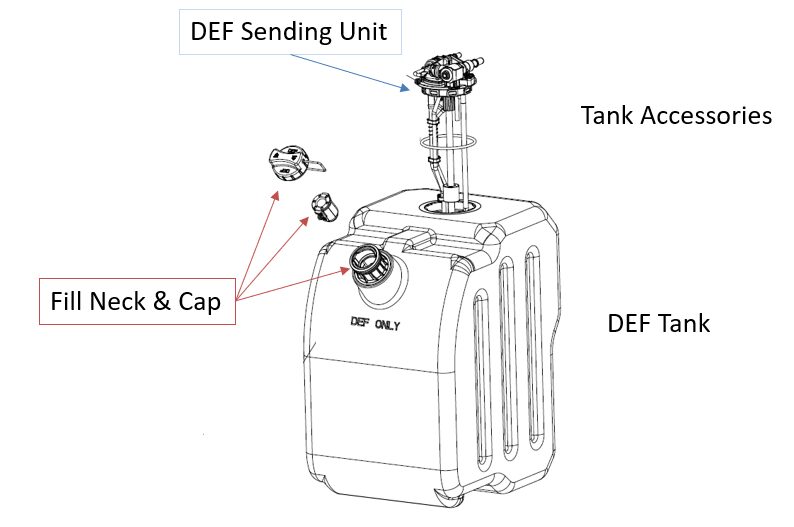Diesel is a commonly used commercial fuel well-regarded for its efficiency. However, diesel engines produce harmful emissions as a byproduct of their operation. In an effort to reduce the risk to human health and harm to the environment, most international standards require the use of exhaust aftertreatment systems to address these harmful emissions. Here’s what you need to know about how these aftertreatment systems work in a diesel vehicle.
Common Diesel Engine Emissions
The main function of an aftertreatment system is to significantly reduce harmful emissions produced by diesel engines. To do this, these systems target certain molecules present after diesel combustion by converting or processing them into less harmful byproducts. Targeted emissions include Particulate Matter (PM), Hydrocarbons (HCs) and Nitrogen Oxides (NOx) present at different stages of the engine operation.
Particulate Matter (PM)
One type of particulate matter is the black soot that exits exhaust pipes during vehicle operation. It is the result of the partial combustion of hydrocarbons, engine oil and other additives present in fuel. Particulate matter becomes trapped in the Diesel Particulate Filter (DPF) by funneling the exhaust gasses through a ceramic filter. As the equipment operates, PM accumulates in the DPF, which requires regular cleaning. The cleaning, also called a regeneration cycle, is the process of burning particulate matter and transforming it into ash.
There are two types of regeneration cycles:
- Passive regeneration, where the engine produces enough heat to burn off the PM under normal operating conditions.
- Induced regeneration, where the engine does not produce enough heat to burn off the PM under normal operating conditions. During induced regeneration, the engine will go into another regeneration cycle with an artificial load on the engine to create higher exhaust gas temperatures.
Hydrocarbons (HCs)
Unburned diesel fuel exits the engine as hydrocarbons due to a cool engine or low in-cylinder combustion temperatures. Hydrocarbons will start to diminish as the engine warms up and in-cylinder temperatures increase. A lean air-fuel mixture can also result in excessive hydrocarbon emissions while the engine is under a light load.
Nitrogen Oxide (NO), Nitrogen Dioxide (NO₂) and NOx
Nitrogen Oxides (NO) and Nitrogen Dioxide (NO₂) together are known as NOx. Diesel Exhaust Fluid (DEF) also known as AdBlue®, is used in the aftertreatment system to reduce NOx. DEF is composed of 32.5% urea (CO(NH₂)₂) and demineralized water. DEF is sprayed and then spread into the exhaust gas via a mixer before entering the Selective Catalytic Reduction (SCR) system.
As DEF enters the system, it evaporates into ammonia (NH₃) and water (H₂O), the ammonia sticks on the SCR catalyst and binds with the nitrogen oxides as they pass over the catalyst. Once bound, the nitrogen oxides will combine with the ammonia to create a chemical reaction resulting in nitrogen and water.
(NO+NO₂+2NH₃ -> 2N₂ + 3H₂O)
Emission Regulations for Highway Vehicles
As the world continues to see increasing negative effects associated with vehicle emissions, countries around the world are beginning to enact legislation to address these concerns. Standards such as ISO 22241 directly address exhaust emissions and provide guidelines by which vehicle and engine manufacturers can design and manufacture products.
The United States has implemented a phased plan for emissions regulations to give vehicle and engine manufacturers time to develop the technology to meet regulations. On-highway trucks were impacted by the first phase in 2008 and a second, more strict phase in 2010.
Emission Regulations for Off-Road Vehicles
The U.S. government has also established emissions regulations for off-road vehicles. The timing of the off-road requirements was slightly behind the on-road vehicle standards. But they were similar.
Emissions standards are classified in “tiers” for off-road vehicles, with Tier 1 being the least strict and Tier 4 being the strictest emissions regulations. As with on-road regulations, the EPA started with less strict emissions standards but increased requirements as years progressed.
KUS Exhaust Aftertreatment Systems
KUS DEF products focus on NOx conversion. Exhaust aftertreatment products include DEF sending units, standard, and custom DEF tanks, and related accessories. Sending units come with a built-in design that includes DEF level, temperature, and heating/thawing features. We also manufacture and integrate ultrasonic DEF quality sensors into our DEF sending units, which measure the urea concentration in the DEF. This ensures that the correct amount of urea is present in the DEF sprayed into the SCR system, allowing the aftertreatment system to effectively reduce NOx emissions.
KUS has a distinct advantage in that we are a comprehensive DEF tank assembly manufacturer. This means that we can engineer, design, validate, and produce DEF tanks, DEF sending units, DEF caps, fill necks, and other DEF tank accessories, making us a one-stop-shop for our customers.
We engineer and design all of our tank assemblies for SCR systems in accordance with ISO 22241 standards. This ensures that all products created by KUS not only benefit our customers and end-users, but also the planet.





